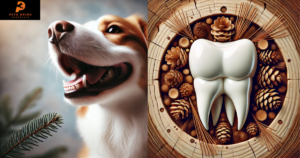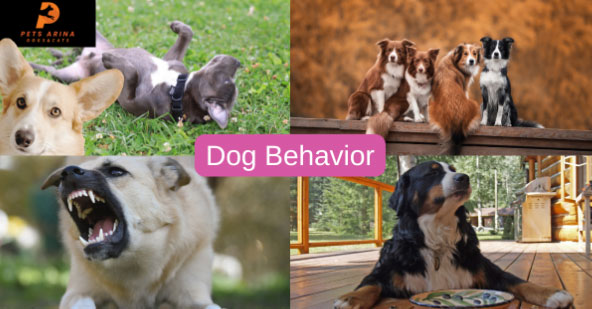Dogs hold a special place in our hearts as loyal companions. However, some dogs are born with or develop deformities that can impact their lives in unique ways. In this article, we’ll delve into what it means for a dog to be deformed, the potential causes of such conditions, how they affect the dog’s quality of life, and the role of responsible care in improving their well-being.
What Is a Deformed Dog?
A deformed dog refers to a dog that has physical irregularities or malformations that are either congenital (present at birth) or acquired during the dog’s life. These deformities can affect various parts of the body, including limbs, spine, skull, or organs. While some deformities may be minor and cause little discomfort, others can lead to significant health issues or reduced mobility.
Types of Dog Deformities
Dog deformities can vary in severity and type, depending on the cause. Some common types of deformities include:
- Skeletal Deformities: These involve malformations in the bones and joints. Conditions like hip dysplasia, where the hip joint does not develop properly, are common skeletal deformities in dogs. Another example is bowed legs, where the dog’s limbs curve outward.
- Craniofacial Deformities: These deformities affect the dog’s skull and face. Dogs with cleft palates or jaw deformities may face difficulties eating or breathing.
- Spinal Deformities: Deformities in the spine can lead to issues with movement and stability. Conditions like scoliosis (sideways curvature of the spine) or kyphosis (abnormal curvature) are examples of spinal deformities in dogs.
- Organ Malformations: Some dogs are born with internal organ deformities, such as heart defects, kidney malformations, or lung issues that affect their overall health and function.
- Polydactylism: Polydactylism is a condition where a dog is born with extra toes on one or more feet. While it may look unusual, it usually doesn’t cause health issues unless it leads to mobility problems or discomfort.
See also: Furry French Bulldog: Care, Health, Personality & History
Causes of Deformities in Dogs
There are several possible causes of deformities in dogs, which can be categorized into genetic, environmental, and accidental factors.
Genetic Factors
Some deformities are inherited through the dog’s genes. Breeds that have been selectively bred for certain traits may be more prone to genetic conditions, such as hip dysplasia, which is common in large breeds like German Shepherds and Golden Retrievers. Inbreeding, or the mating of closely related dogs, can also increase the likelihood of genetic deformities being passed down.
Environmental Factors
In some cases, deformities may result from environmental factors. For example, a dog may suffer a deformity if the mother was exposed to harmful substances during pregnancy, such as toxins or infections that affect fetal development. Poor nutrition or lack of prenatal care can also play a role in causing deformities.
Accidental Factors
Trauma or injury during birth or early puppyhood can lead to deformities. A difficult birth, for example, might cause a puppy’s bones to break or be malformed. In some cases, an injury later in life, such as a broken leg that heals incorrectly, may result in a permanent deformity.
How Deformities Affect a Dog’s Life
The impact of a deformity on a dog’s life depends on the severity of the condition. Some dogs with minor deformities may lead relatively normal lives, while others with more severe conditions may require ongoing veterinary care or surgeries. Here are some ways deformities can affect a dog:
- Pain and Discomfort: Depending on the nature of the deformity, the dog may experience pain or discomfort. Conditions like hip dysplasia or spinal deformities often lead to arthritis or other joint issues that can cause chronic pain.
- Mobility Issues: Dogs with limb deformities, spinal issues, or joint malformations may have difficulty walking, running, or even standing. This can reduce their quality of life and may require mobility aids like braces or wheelchairs to help them get around.
- Breathing and Eating Difficulties: Deformities in the face or jaw can lead to problems with breathing or eating. Dogs with cleft palates or jaw deformities may struggle to eat properly or breathe easily.
- Social and Behavioral Impact: Deformities may also affect a dog’s behavior. A dog in pain or discomfort may become more withdrawn or aggressive. Additionally, dogs with physical deformities may experience anxiety or depression, especially if they feel excluded from social interactions due to their limitations.
Diagnosing Deformities in Dogs
If a dog is suspected of having a deformity, a veterinarian will perform a thorough examination, which may include:
- Physical Examination: The vet will check for any obvious physical signs of deformities, such as abnormal limb positions, facial malformations, or signs of pain.
- X-rays and Imaging: To assess skeletal or internal deformities, the vet may use X-rays or other imaging techniques like CT scans or MRIs. These can help identify issues like joint misalignment, bone malformations, or internal organ problems.
- Blood Tests: In some cases, blood tests may be conducted to check for underlying health conditions that could be contributing to the deformity.
- Genetic Testing: If a genetic cause is suspected, the vet may recommend genetic testing to identify any inherited conditions.
Treatment Options for Deformed Dogs
The treatment for a deformed dog depends on the type of deformity, its severity, and how it affects the dog’s quality of life. Some common treatment options include:
- Surgery: In many cases, surgery can help correct or alleviate deformities. For example, dogs with hip dysplasia may undergo surgery to repair or replace the hip joint, while dogs with cleft palates may need surgery to close the gap in the mouth.
- Physical Therapy: For dogs with skeletal or spinal deformities, physical therapy may be recommended to improve mobility and reduce pain. Exercises, massage, and stretching can help strengthen muscles and alleviate discomfort.
- Medication: Pain medications, anti-inflammatory drugs, and joint supplements can be used to manage pain and inflammation associated with deformities. For more severe conditions, medications may be necessary for long-term management.
- Mobility Aids: Dogs with severe limb deformities or mobility issues may benefit from mobility aids such as braces, carts, or wheelchairs. These devices help the dog move around and maintain an active lifestyle.
- Palliative Care: In cases where surgery or other treatments are not viable, palliative care can help manage the dog’s discomfort and improve their quality of life. This may include pain management, assisted living arrangements, and regular monitoring of the dog’s health.
See also: Who Brought Their Dogs To The Grammys?
Preventing Deformities in Dogs
While not all deformities can be prevented, there are steps that dog owners and breeders can take to minimize the risk:
- Responsible Breeding Practices: Breeding dogs with known genetic deformities or hereditary conditions should be avoided. Breeders should test for common breed-specific deformities and strive for healthy breeding practices.
- Proper Nutrition: Ensuring that pregnant dogs receive proper nutrition is essential for the healthy development of their puppies. Nutrient-rich food helps prevent deficiencies that could lead to deformities.
- Regular Veterinary Care: Regular checkups with a veterinarian can help detect deformities early, allowing for prompt treatment. Puppies should also be screened for genetic conditions and health issues before adoption.
- Accident Prevention: Protecting dogs from injuries, especially during their early years, can help prevent deformities caused by trauma. Creating a safe environment and providing proper care during the birth process can reduce the likelihood of deformities.
Conclusion
Deformities in dogs, whether congenital or acquired, can present unique challenges for both the dogs and their owners. However, with the right diagnosis, treatment, and care, many dogs with deformities can lead fulfilling, active lives. By understanding the causes of deformities and taking steps to prevent them, we can help ensure that dogs receive the best possible care and live their lives to the fullest.















